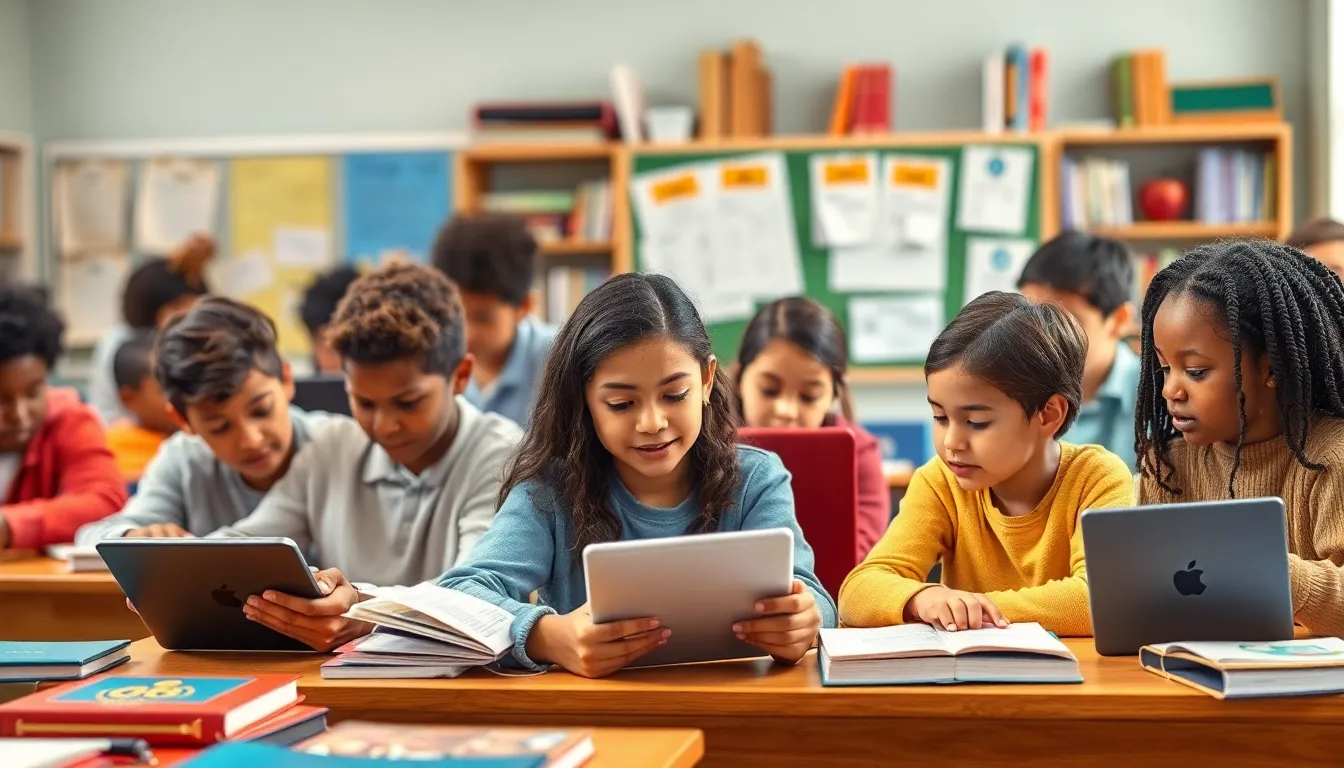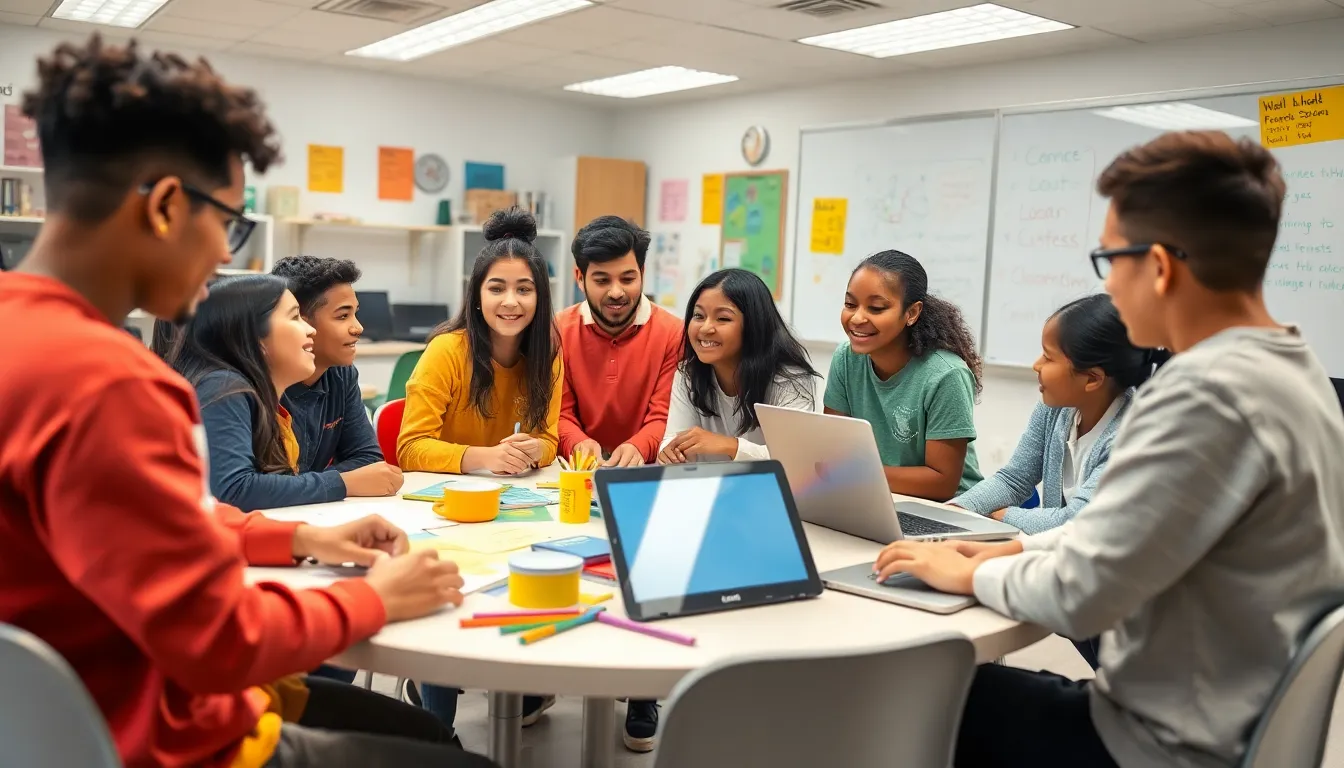In today’s fast-paced world, education faces challenges that can leave even the most seasoned educators scratching their heads. From outdated curricula that feel like a relic from the Stone Age to the tech-savvy students who seem to know more about their smartphones than their textbooks, the landscape of learning is shifting in ways that demand attention.
Table of Contents
ToggleOverview of Issues in Education Today
Outdated curricula continue to pose significant challenges in classrooms. Many subjects lack practical application, rendering them irrelevant to today’s students. Disparities in educational access create uneven opportunities for learners across different socioeconomic backgrounds. Students in underfunded areas often face limited resources, affecting their overall academic performance.
Traditional teaching methods struggle to engage tech-savvy students. Many educators rely on outdated practices that fail to excite today’s learners. This disconnect contributes to lower student motivation and participation in class. Incorporating technology into the learning experience becomes essential for maintaining engagement and preparing students for future careers.
Assessment methods also require re-evaluation. Standardized tests often measure rote memorization rather than critical thinking skills. They can create undue stress, impacting student mental health. Adopting alternative assessment strategies could provide a more holistic view of student understanding and capabilities.
Additionally, teacher shortages hinder the quality of education. Many schools struggle to attract and retain qualified educators, leading to larger class sizes and less individualized attention for students. Supporting teachers through ongoing professional development can enhance their skills and improve student outcomes.
Equity in education remains a pressing concern. Marginalized groups often encounter systemic barriers in accessing quality education. Fostering an inclusive environment that addresses these disparities is crucial for creating equal opportunities for all students.
Overall, these issues underscore the need for a comprehensive approach to reform education. Education systems must adapt to the evolving needs of students, ensuring that all learners receive the support and resources necessary for success.
Systemic Challenges

Systemic challenges persist in education, affecting the effectiveness and equity of learning experiences for all students.
Funding Disparities
Funding disparities create significant obstacles in education. Schools in affluent areas often receive more financial support compared to those in low-income regions. Such inequities lead to variations in educational quality, resources, and facilities. Limited funding restricts access to advanced technology, extracurricular activities, and specialized programs. As a result, students in underfunded schools face greater challenges in achieving academic success. States that prioritize equitable funding models help bridge these gaps. Research indicates that increased investment in disadvantaged schools significantly improves student outcomes.
Access to Resources
Access to resources affects students’ educational experiences. Unequal distribution of textbooks, technological tools, and learning materials creates disparities. Many students in underserved areas lack adequate internet connectivity, limiting research capabilities and online learning opportunities. Libraries and laboratories often remain under-resourced, hindering hands-on learning experiences. Teachers encounter difficulties when trying to develop engaging curricula without sufficient materials. Schools that build partnerships with local businesses and organizations can enhance resource availability. Increasing access to quality resources is essential for fostering an equitable learning environment for all students.
Curriculum Relevance
Curriculum relevance addresses the disconnect between educational content and real-world application. Educators face significant challenges integrating modern technology and ensuring inclusivity.
Technology Integration
Technology integration proves vital for engaging today’s digital natives. Schools must incorporate tools like interactive software and online resources. These tools enhance learning experiences by making education more dynamic. When used effectively, they encourage collaboration and deeper understanding. Some educators find success using blended learning models, which combine traditional and online methods. This approach accommodates diverse learning styles. Adopting technology doesn’t just improve engagement; it prepares students for a tech-driven workforce. Research indicates that students exposed to technology in classrooms score higher in critical thinking and problem-solving skills.
Inclusivity and Diversity
Inclusivity and diversity are essential components of a relevant curriculum. Classrooms must reflect diverse perspectives and backgrounds. Curriculum developers should prioritize materials that represent various cultures. This representation fosters a sense of belonging among all students. Additionally, differentiated instruction practices ensure that every student’s unique needs are met. Recognizing and addressing learning differences improves overall academic performance. Schools adopting inclusive curricula often see enhanced student engagement. Moreover, equity in educational experiences contributes to better mental health outcomes for marginalized groups. Research highlights the correlation between diversity in educational content and improved student well-being.
Teacher Support and Development
Teacher support and development are crucial in addressing the challenges in education today. Investing in educators ensures they adapt effectively to modern learning environments.
Professional Training
Quality professional training equips teachers with the skills necessary to engage students. Well-designed training programs emphasize technology integration and innovative teaching strategies. Regular workshops enhance teaching methodologies and foster a culture of continuous improvement. Mentorship opportunities pair inexperienced teachers with seasoned professionals, creating a supportive network. Ultimately, ongoing development enhances educators’ ability to address diverse student needs and increases job satisfaction.
Mental Health and Wellbeing
Mental health and wellbeing play a vital role in teacher effectiveness. Educators face significant stress from high workloads and classroom demands. Schools that prioritize mental health initiatives create supportive environments for teachers. Access to counseling services and wellness programs reduces burnout and promotes resilience. When teachers feel supported, they can foster healthier classroom atmospheres that benefit student learning outcomes. Prioritizing mental wellbeing strengthens the entire educational process and enhances overall school culture.
Student Engagement
Student engagement significantly influences learning outcomes. Educators face challenges in connecting with a generation accustomed to interactive technology and instant gratification.
Motivation and Participation
Motivation levels among students often decline in traditional classroom settings. Teachers can boost engagement by incorporating technology into lessons, such as interactive software or online resources. Various studies show that integrating these tools enhances participation and fosters enthusiasm. Games and quizzes make learning enjoyable, promoting a more vibrant classroom atmosphere. Additionally, active learning strategies, including group discussions and hands-on activities, encourage students to take ownership of their education. Implementing such methods not only increases motivation but also significantly improves learning retention.
Support for Diverse Learning Needs
Supporting diverse learning needs is crucial for fostering student engagement. Teachers can benefit from differentiation strategies tailored to individual student strengths and weaknesses. Providing varied instructional methods accommodates various learning styles, enhancing individual understanding. Moreover, accessibility in curriculum materials addresses the unique requirements of all learners, including those with disabilities. Continuous professional development ensures educators remain equipped with the necessary skills for inclusion. Research indicates that when students feel supported, their confidence and academic performance improve. Creating an inclusive environment promotes belonging and encourages active participation from every student.
Addressing the multifaceted issues in education today requires a collective effort from educators, policymakers, and communities. By prioritizing equitable funding and modernizing curricula, stakeholders can create learning environments that resonate with today’s students. Emphasizing technology integration and active learning strategies will engage learners and promote critical thinking skills essential for their future.
Moreover, investing in teacher development and mental health initiatives will foster supportive classrooms where both educators and students can thrive. A commitment to inclusivity and diversity in educational practices ensures that every student feels valued and empowered. Ultimately, tackling these challenges head-on will pave the way for a more effective and equitable education system that prepares all learners for success in an ever-changing world.




